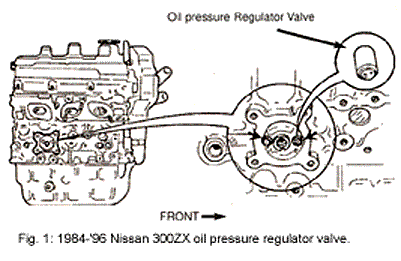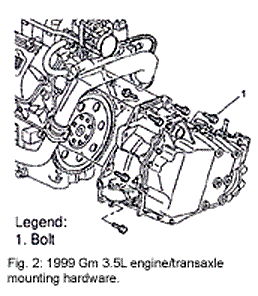Engine Builders: The following information regarding the oil pressure regulator valve on 1984-’96 Nissan 300ZX 3.0L non-turbo engines may be helpful for your installer customers.
When installing a new replacement cylinder block/engine in a 300 ZX non-turbo car you’ll notice the new block/engine assembly comes with two blind plugs installed in the oil filter bracket boss on the engine block. The original engine that is removed from the vehicle has two oil pressure regulators installed. The blind plugs must be removed and the regulator valves installed to prevent engine damage. Drill, thread and use a slide hammer to remove the blind plugs.

During the engine rebuilding process all of the cylinder block plugs/oil pressure regulators get removed, so the block can be cleaned. See Figure 1, for the correct location of the oil pressure regulator valves. At the time of printing, the Nissan part number for the oil pressure regulator valve was p/n 15241-40F00 (two are required). Drive in the new oil pressure regulator with a suitable tool/socket just flush with the mounting surface.
NOTE: The 300 ZX Turbo engine has the oil pressure regulator valves installed in the oil filter bracket and does not need this procedure.
Engine Builders: The AERA Technical Committee offers the following information regarding an assembly caution for 1999 GM 3.5L VIN H engines. This caution regarding the mounting hardware used to connect the engine assembly and transaxle together may be helpful for installers. Two different length fasteners are used and if incorrect fastener is installed at location 1 engine damage may result.

This bulletin was issued to emphasize the importance of returning transaxle/engine bolts to their original positions. Transaxle/engine bolts are not interchangeable. The bolt installed in the No. 1 position (see Figure 2) is 2 mm (5/64?) shorter than the other bolts and requires the use of thread sealant.
NOTE: If the No. 1 bolt is replaced with one of the longer bolts, damage may occur to the engine oil gallery passage.
For information on receiving all of AERA’s regular monthly technical bulletins and other association services and benefits, call toll free 888-326-2372 or send an e-mail to [email protected]. AERA’s Web site is www.aera.org.













